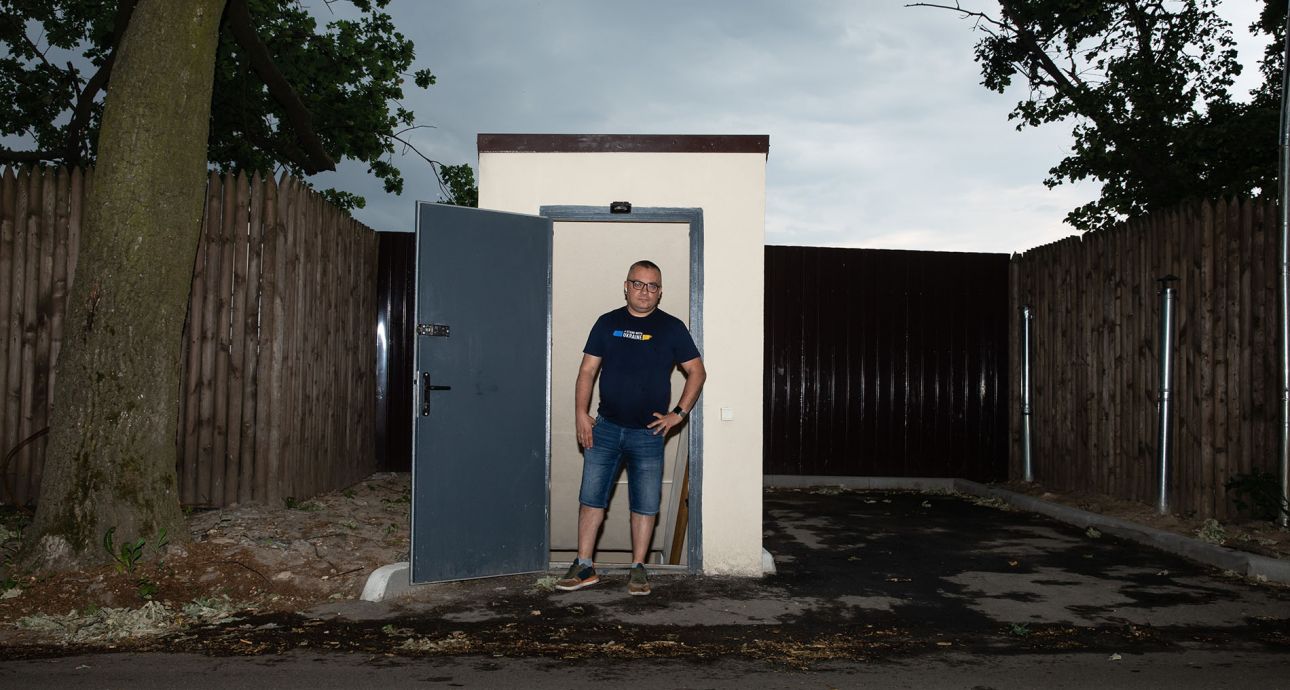
My Fortress: How a Kyivan Built His Own Bunker
Kyrylo Barashkov is 43 years old, an attorney by profession, and has been volunteering since the beginning of the full-scale Russian invasion. After the massive attack on October 10, when Russian rockets hit Volodymyrska Street, Shevchenko Park, and the glass bridge in Kyiv, Kiryl took it upon himself to build a bunker near his home.
— My family and I live in a private sector where there are no bomb shelters like in residential areas or the city center. That’s why I decided to build my own bunker for myself and our neighbors right on the street.
It was designed by a construction foreman, an old acquaintance of mine. He fought for a long time until he was discharged due to injuries. He built the bunker with expertise. The structure is quite simple: it consists of a single room measuring twelve square meters and a utility room of three meters. They are buried five meters underground. The top is covered with two meters of reinforced concrete. The walls are lined with paneling and wooden panels.
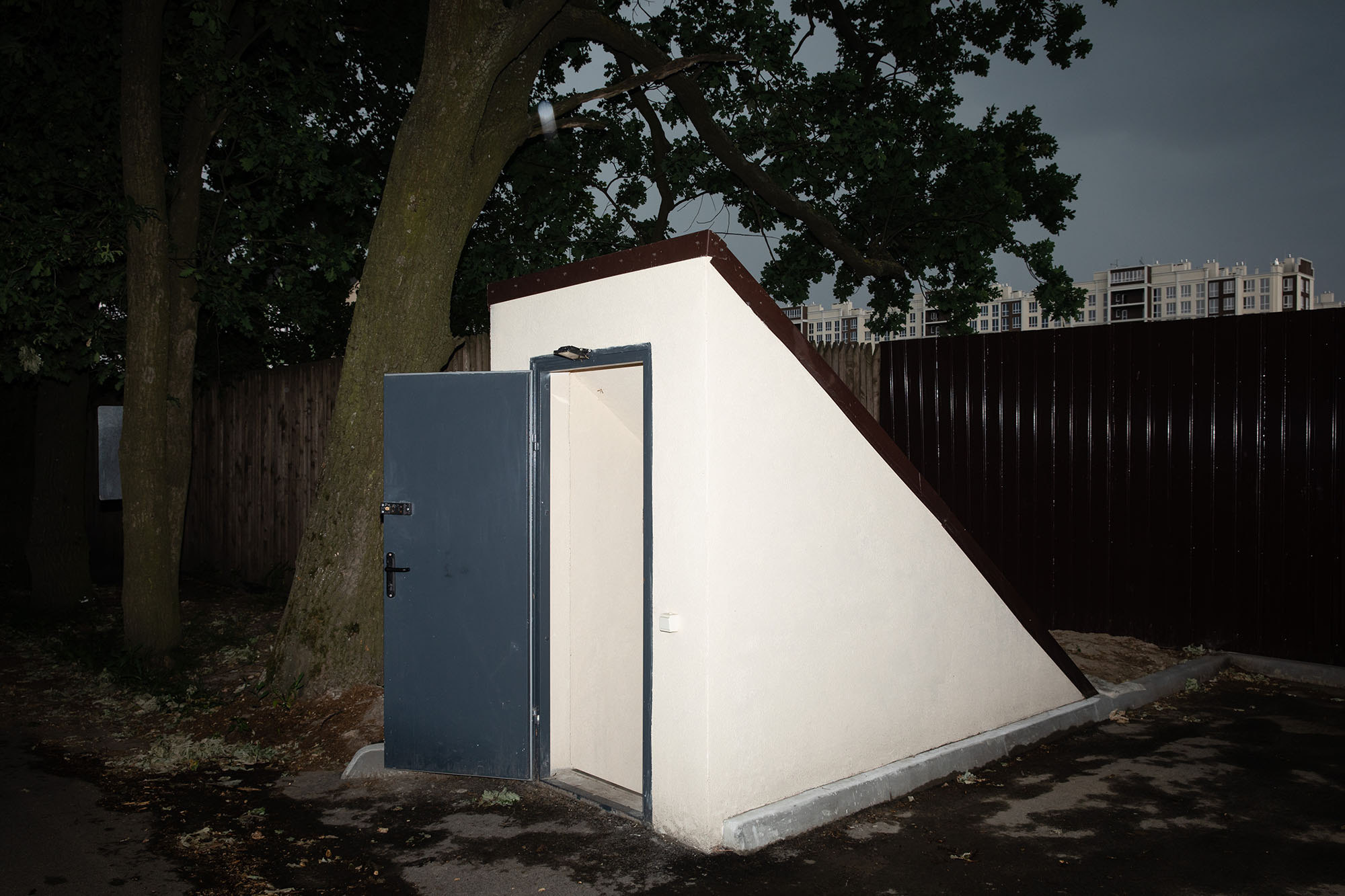
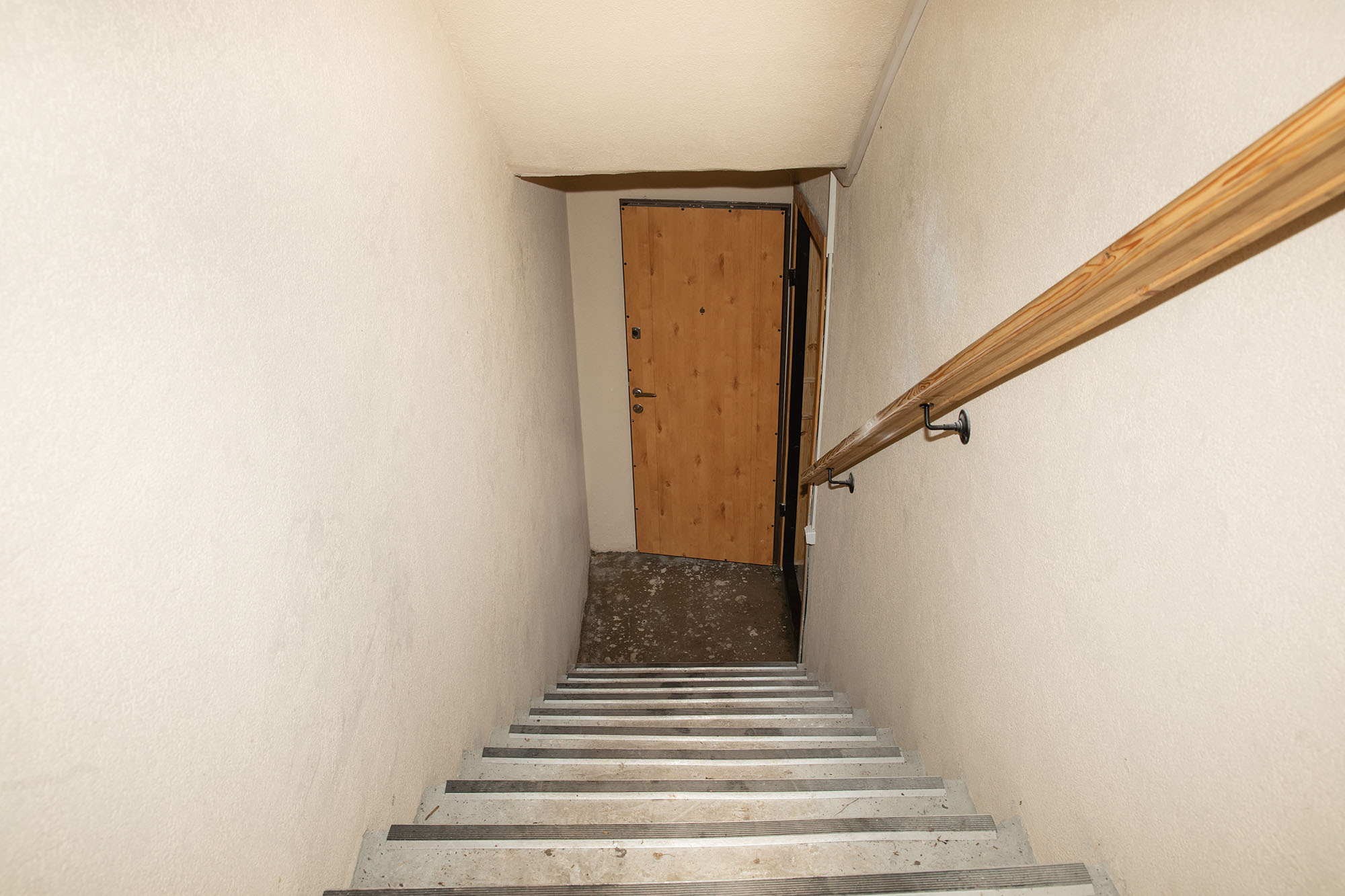
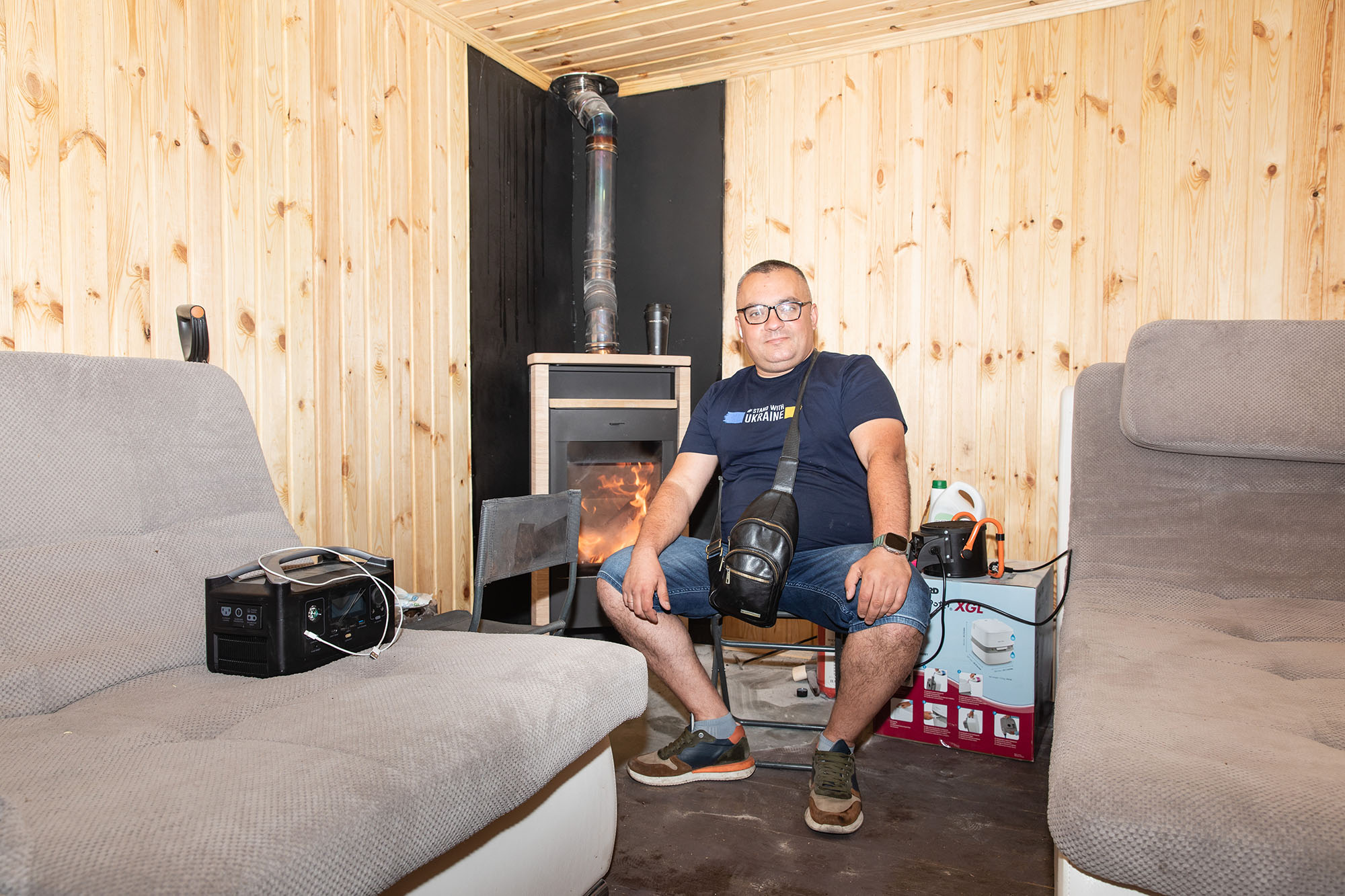
Inside, I arranged the space to be as cozy and warm as possible, a place where children could sit comfortably. I placed a soft sofa, a cot, and chairs. When my family is away, I come down here to spend the night, so I don’t have to run around during air alerts. It’s like sleeping in a hyperbaric chamber: no light, no sounds. And it’s peaceful.
It’s like sleeping in a hyperbaric chamber: no light, no sounds.
For warmth, I installed a fireplace. It’s safe, a modern enclosed fireplace with glass doors. The ventilation is properly done, it works in two ways: fresh air comes in through one path, and combustion by-products are expelled through another. There is a supply of drinking water and a small bio toilet—people should feel comfortable when they are in the bunker for an extended period of time.
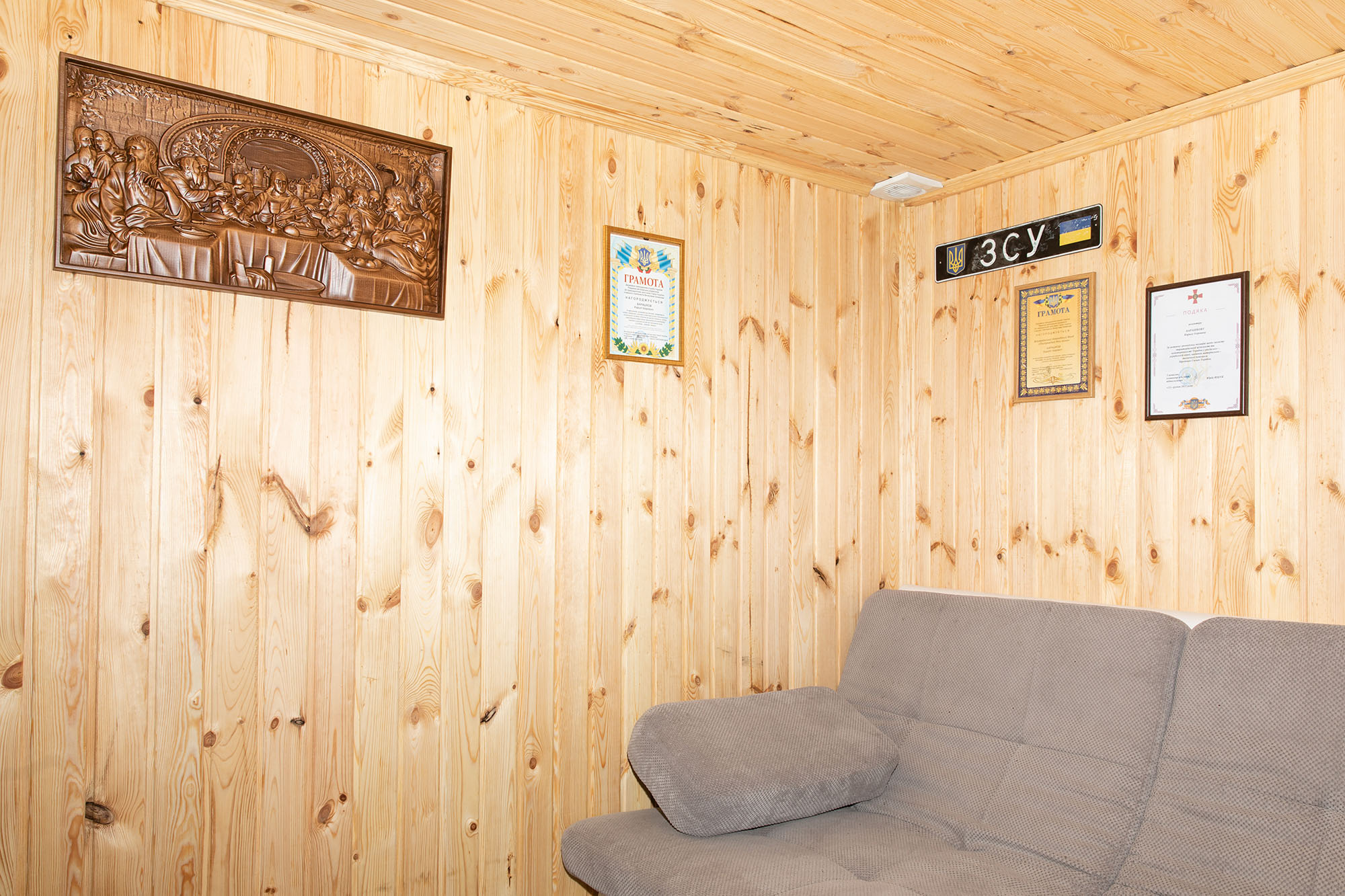
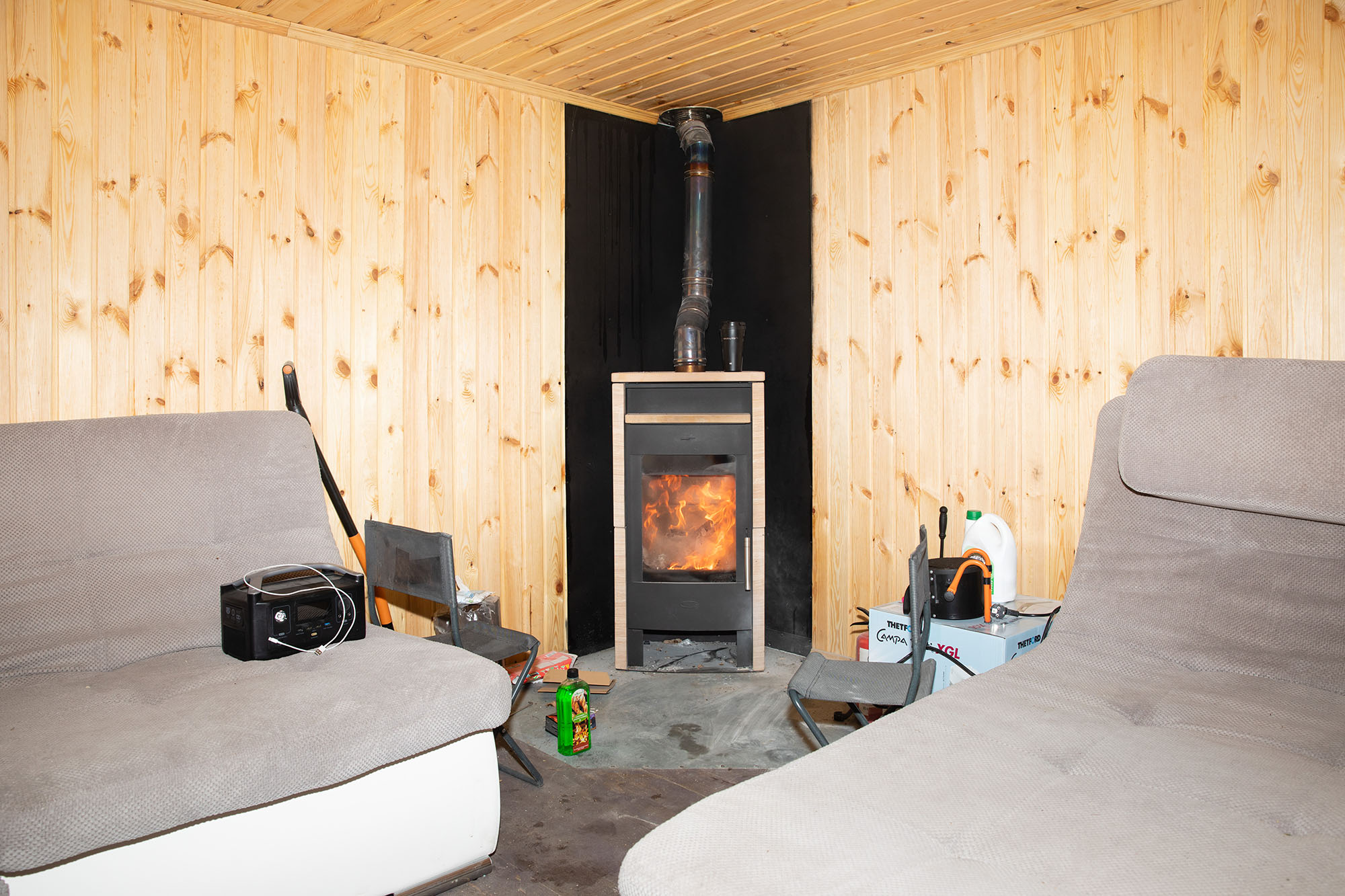
I started building it in October during the active attacks on the Kyiv region and completed it in December. Four people were working on it. I wanted to finish it even faster because my wife was pregnant and we had two children — I was worried about their lives. Construction delays only occurred due to the weather. We had to do it in the cold — our “friends” left us no other choice.
The bunker can accommodate up to 15 people. I made coded doors and sent the code to all the neighbors – we have our own chat – so they can come here whenever they want. Of course, not everyone goes down into the shelter, but people are simply reassured knowing that they have somewhere to go.
We have a kind of closed community, so the locals have reacted very positively to this project. I have often been to Israel and I know that shelters in residential areas there are mandatory. In any case, the bunker was created as a social infrastructure facility.
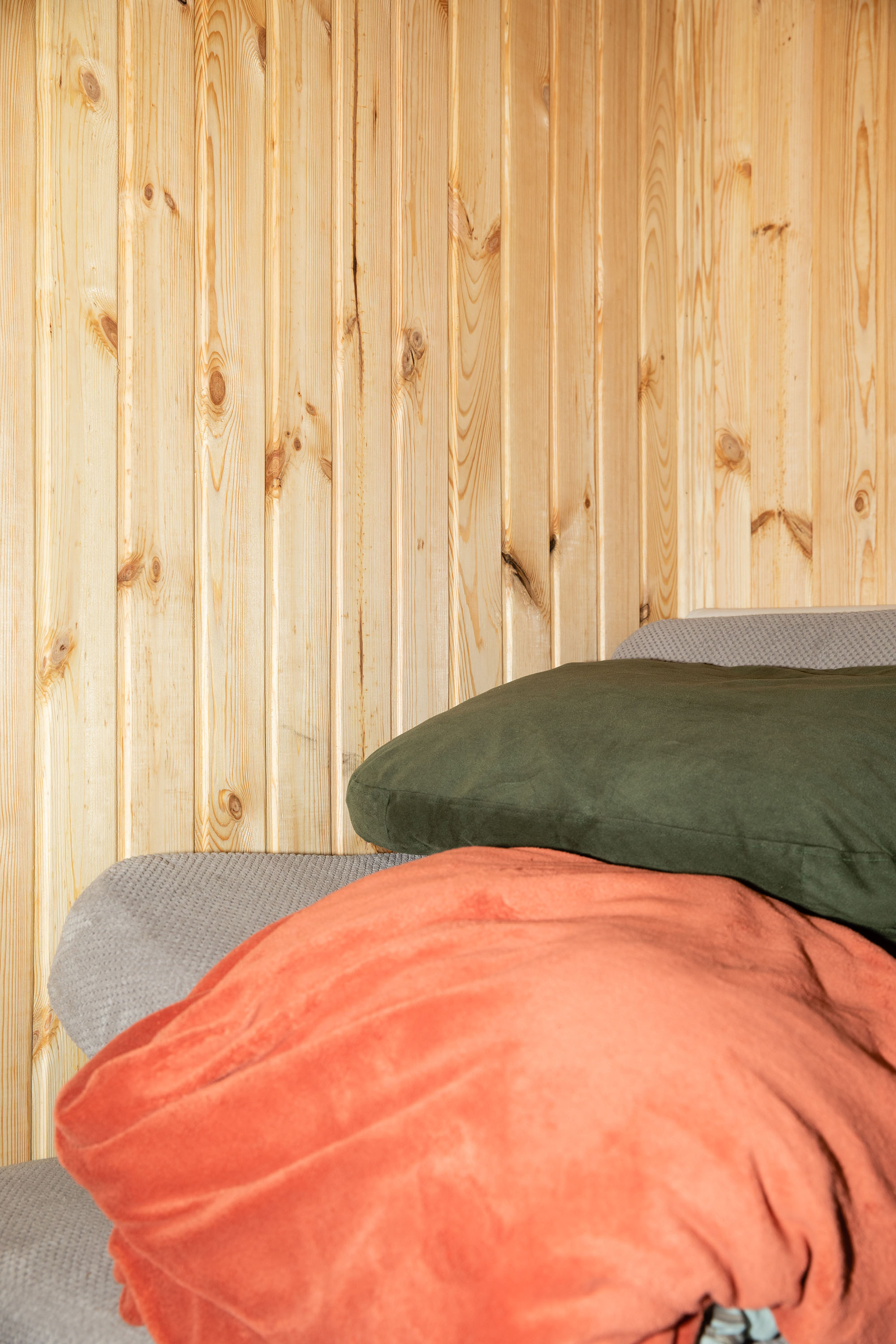
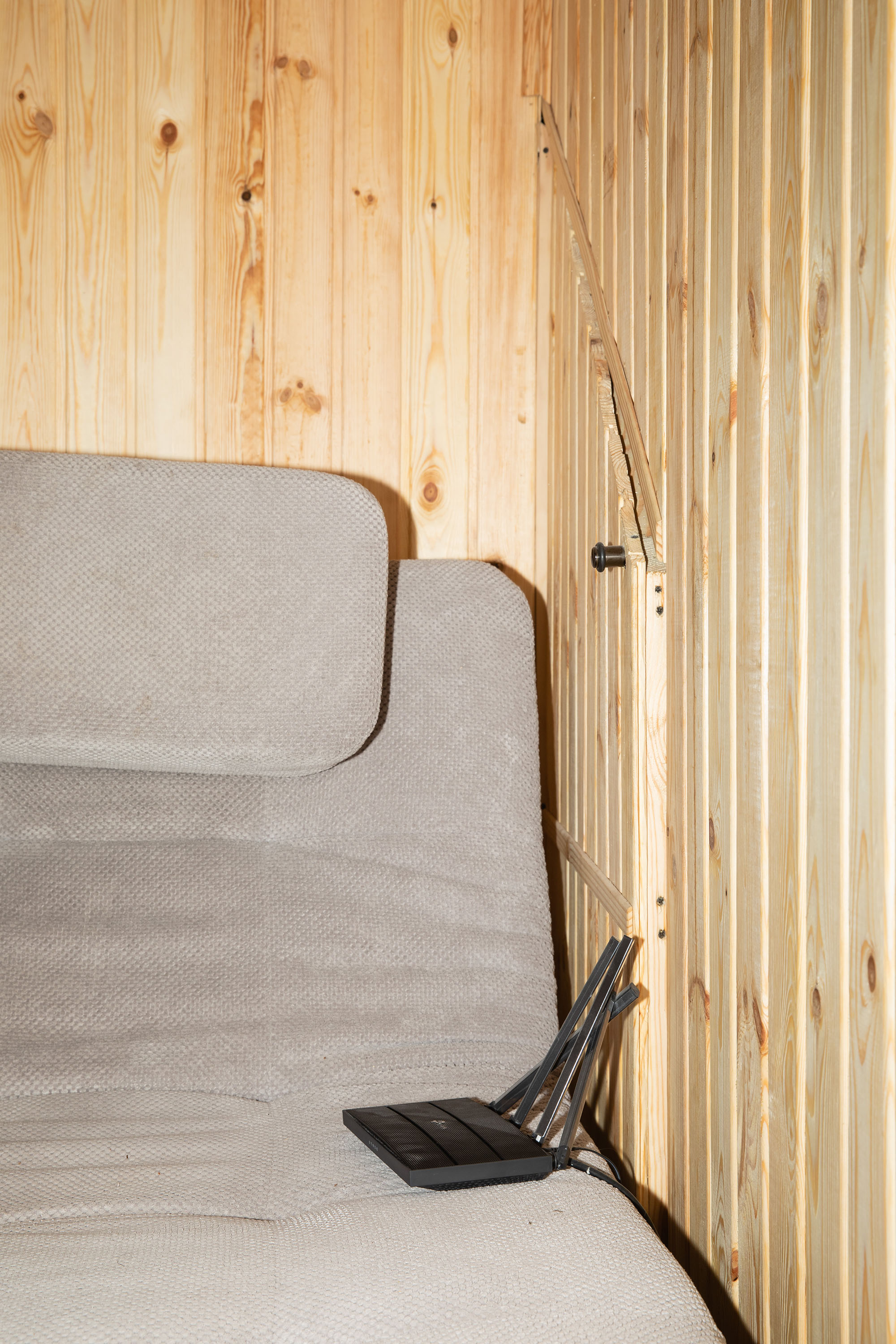
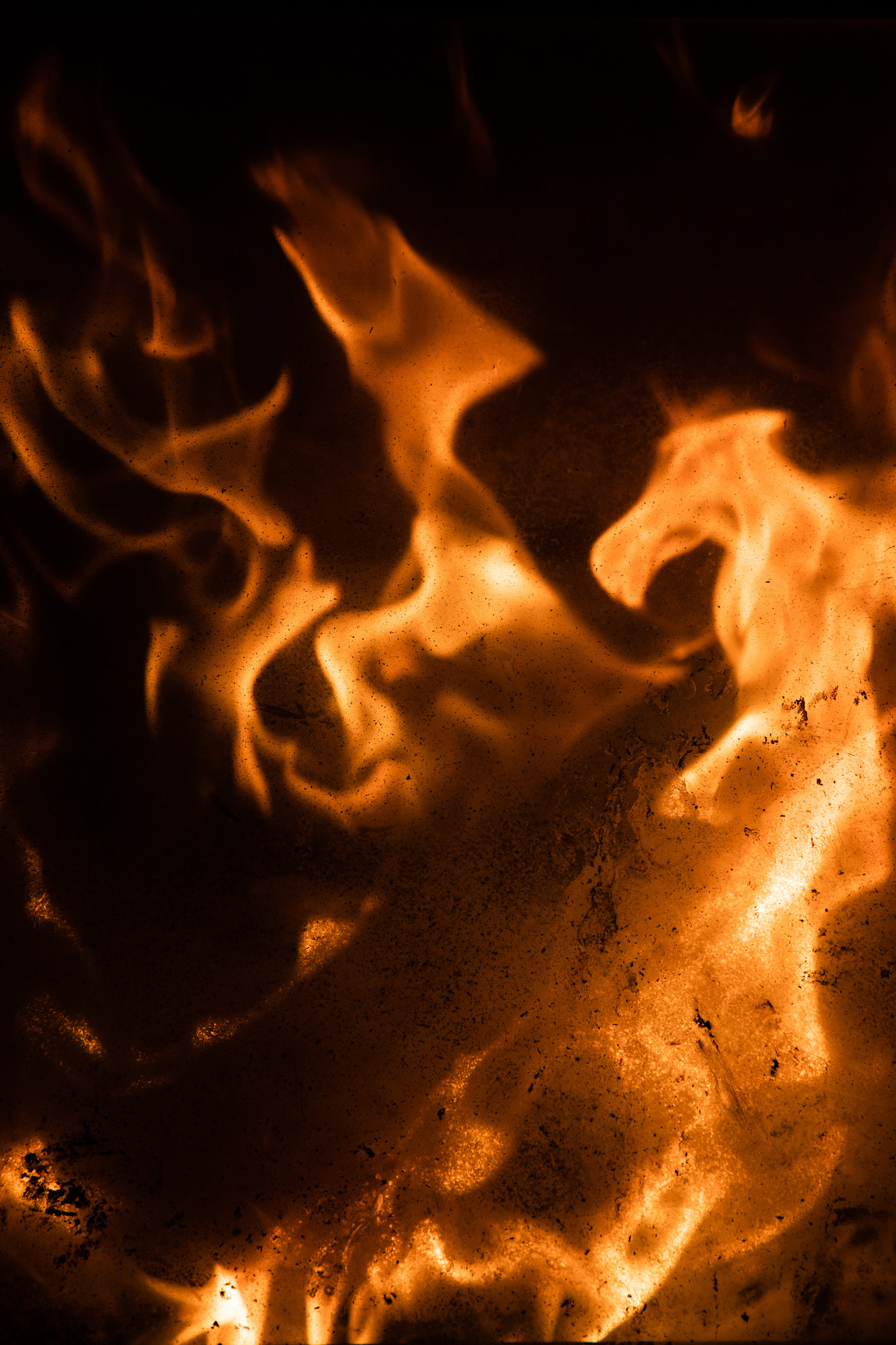
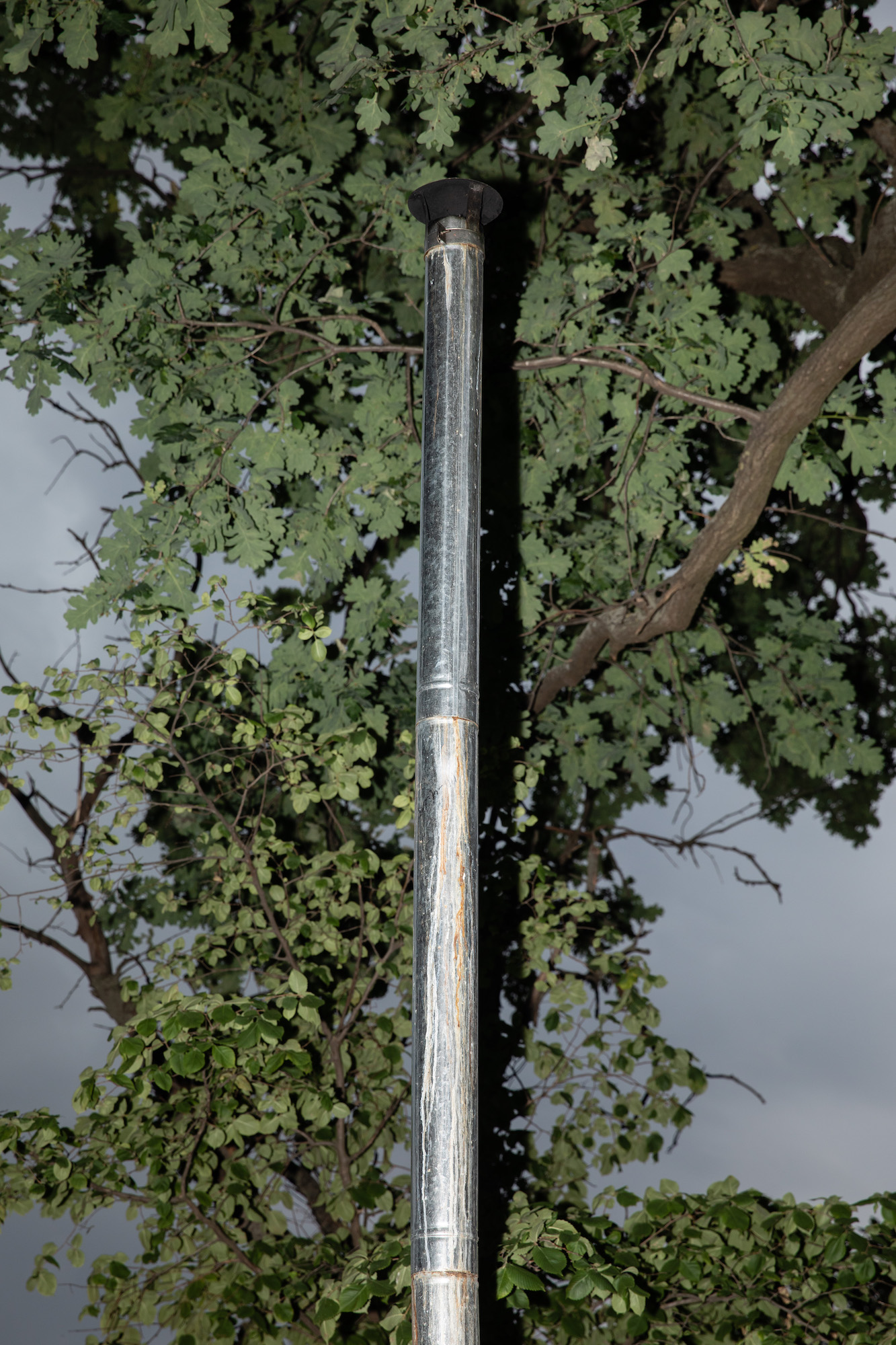
I didn’t go through any paperwork; if I had, I still wouldn’t have built it. The plot is privately owned, so I have the right to such construction – it’s my territory. And if someone has any objections, they can come and tell me that during the war I can’t set up a shelter for people.
Overall, the construction cost $20,000. Safety is something you can’t skimp on, it’s the most important thing right now. I believe that such a shelter is an objective necessity. I’m constantly amazed: during the war, people here buy cars for $30,000-40,000, they do renovations. But to pool resources with five people, for example, to build one bunker – a safe place where you can bring your children – that’s a no. I haven’t heard of any other cases where someone has built a bunker for themselves.
I didn’t take a single penny from other residents on the street, I had the means – I did it. And when the war is over, I’ll turn it into a men’s club, and we’ll relax with the neighbors. My wife doesn’t mind.
Photos: Mykhaylo Palinchak, exclusively for Bird in Flight
New and best




